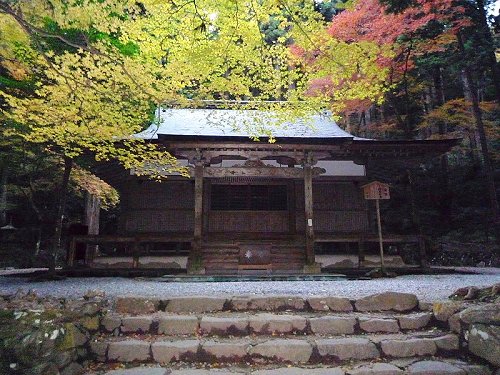Kozan-ji Temple (GPS: 35.06025, 135.67853) is a Omuro Buddhist temple in the Takao district in Ukyo-ku, Kyoto. Officially known as Toganoo-san Kozan-ji, the temple is located deep in the mountains behind Jingo-ji Temple. The mountains are famous for their beautiful autumn leaves, and is regarded as ideal for mountain asceticism. In addition to Kozan-ji, the mountains are also home to other temples including the Toganoo-ji and Toganoo-bo.
The establishment of Kozan-ji Temple goes back to around AD 1206, when a Kegon Buddhist monk who had served at Jingo-ji Temple, was given permission to establish it by the Emperor Go-Toba. He originally named the temple Hiidetemazukouzanwoterasuyama-no-tera, deriving it from the Avatamsaka sutra. It means "Temple of when the sun appears, it first casts its light on the highest mountain".
At the Jingo-ji Temple is a diagram of the Kozan-ji, drawn in 1230. That was about twenty years after it was constructed, and the diagram is now an Important Cultural Property of Japan. The Kozan-ji Temple itself is home to numerous National Treasures of Japan and Important Cultural Properties of Japan, many of which are on loan to national museums in Kyoto and Tokyo.
 Kozan-ji Temple, Takao District
Kozan-ji Temple, Takao DistrictSource: http://commons.wikimedia.org/wiki/File:Kozanji.jpg
Author: 山中紘治

Author: 山中紘治

Kozan-ji Temple is  on the Map of Kyoto
on the Map of Kyoto
 Latest updates on Penang Travel Tips
Latest updates on Penang Travel Tips
 Map of Roads in Penang
Map of Roads in Penang
Looking for information on Penang? Use this Map of Roads in Penang to zoom in on information about Penang, brought to you road by road.
Copyright © 2003-2025 Timothy Tye. All Rights Reserved.

 Go Back
Go Back